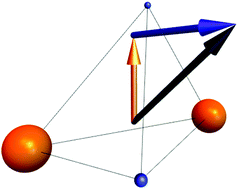Nonadiabatic rotational states of the hydrogen molecule
Abstract
We present a new computational method for the determination of energy levels in four-particle systems like H2, HD, and HeH+ using explicitly correlated exponential basis functions and analytic integration formulas. In solving the Schrödinger equation, no adiabatic separation of the nuclear and electronic degrees of freedom is introduced. We provide formulas for the coupling between the rotational and electronic angular momenta, which enable calculations of arbitrary rotationally excited energy levels. To illustrate the high numerical efficiency of the method, we present the results for various states of the hydrogen molecule. The relative accuracy to which we determined the nonrelativistic energy reached the level of 10−12–10−13, which corresponds to an uncertainty of 10−7–10−8 cm−1.



 Please wait while we load your content...
Please wait while we load your content...